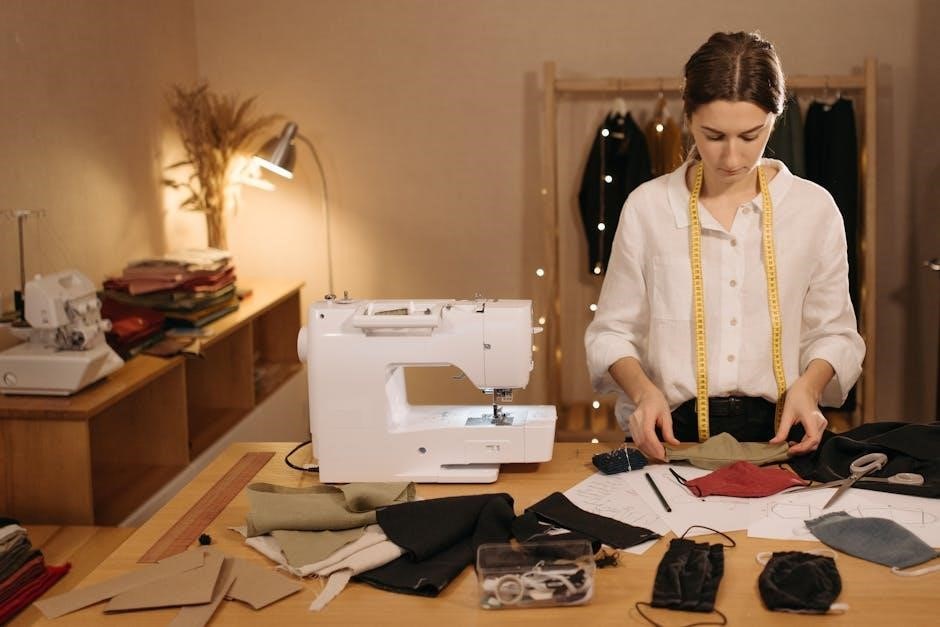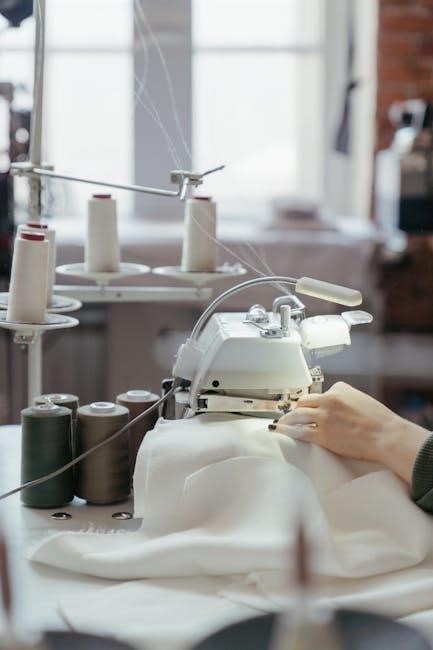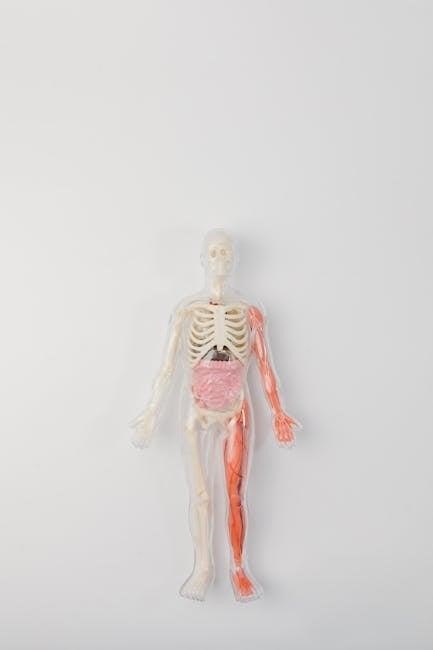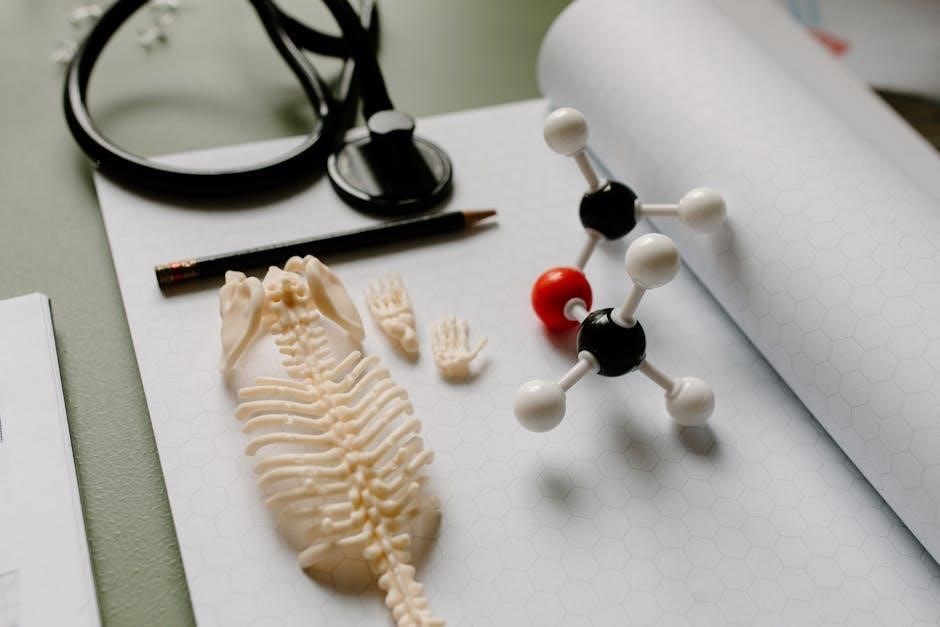Indiana Driver’s Manual in Spanish: A Comprehensive Guide
Indiana offers the official driver’s manual in Spanish, alongside English, Arabic, Burmese, Chinese, and Hakha Chin, ensuring accessibility for all residents preparing for licensing.
The Indiana Driver’s Manual, also known as the Manual del Conductor de Indiana in Spanish, serves as the primary resource for anyone preparing to obtain a driver’s license, permit, or renewal within the state. This comprehensive guide details essential traffic laws, safe driving practices, and specific Indiana regulations.
Available in multiple languages – including English, Spanish, Arabic, Burmese, Chinese, and Hakha Chin – the manual ensures accessibility for a diverse population. It’s crucial for understanding requirements for applications, navigating traffic stops, and adhering to medical considerations related to driving. Studying this manual is the first step towards becoming a responsible and informed driver in Indiana.
Availability of the Manual in Spanish
The Indiana Bureau of Motor Vehicles (BMV) prioritizes inclusivity by making the official driver’s manual readily available in Spanish. This ensures that Spanish-speaking residents have equal access to vital information needed to safely operate a vehicle and successfully pass the licensing exams.
Beyond Spanish, the manual is also offered in English, Arabic, Burmese, Chinese, and Hakha Chin. Residents can access the Manual del Conductor de Indiana in PDF format online through the myBMV website. This multi-lingual approach demonstrates Indiana’s commitment to road safety for all drivers, regardless of their primary language.
Where to Find the Official Spanish Version
The official Spanish version of the Indiana Driver’s Manual (Manual del Conductor de Indiana) is primarily accessible through the myBMV website – myBMV.com. There, you can download the manual as a PDF document for free.
Additionally, a 2024 updated edition is available for purchase on Amazon.com, titled “Manual Del Conductor De Indiana: Edición 2024 (Indiana Drivers Manual ⸺ 2024 Update) (Spanish Edition)”. The BMV provides the manual directly, ensuring it’s the most current and accurate resource for preparing for your Indiana driving tests.

Obtaining an Indiana Driver’s License
To apply for an Indiana driver’s license, applicants must fulfill specific requirements and provide necessary documentation to the BMV, regardless of language.
Eligibility Requirements for a Driver’s License
To be eligible for an Indiana driver’s license, applicants must meet certain criteria outlined by the Bureau of Motor Vehicles (BMV). This includes proving legal presence in the United States, demonstrating Indiana residency, and meeting age requirements – generally, being at least 16 years old for a learner’s permit and 18 for a full license (with exceptions).
Applicants must also demonstrate knowledge of Indiana traffic laws, typically through a written exam based on the official Indiana Driver’s Manual, available in multiple languages including Spanish. Furthermore, a vision test is required, and applicants must be mentally and physically capable of operating a vehicle safely. Specific credential requirements may necessitate additional documentation.
Required Documents for Application
Applying for an Indiana driver’s license necessitates presenting specific documentation to the BMV. Proof of identity, such as a certified birth certificate or U.S. passport, is crucial. Establishing Indiana residency requires documents like utility bills or lease agreements. Applicants must also provide their Social Security number, though the card itself isn’t always required.
If applying for a commercial license, additional endorsements and medical certifications are necessary. The Indiana BMV website details a comprehensive checklist, and the manual, available in Spanish, outlines acceptable forms of identification and residency proof. Ensure all documents are original or certified copies.
The Application Process at the BMV
The Indiana BMV application process involves several key steps. First, complete the application form, available online or at a BMV branch. Next, present the required documentation – proof of identity, residency, and Social Security number – as detailed in the Indiana driver’s manual, which is accessible in Spanish.
You’ll then pass a vision test and potentially a knowledge exam based on the manual’s content. A driving skills test is required for new drivers. Fees apply at each stage. The myBMV website allows scheduling appointments, streamlining the process.

Understanding Indiana Traffic Laws
The Indiana BMV manual, available in Spanish, details crucial traffic regulations, including speed limits, right-of-way rules, and essential seat belt/child restraint laws.
Speed Limits in Indiana
The Indiana Driver’s Manual, accessible in Spanish, thoroughly outlines the state’s speed limits for various roadways. Generally, the maximum speed on rural interstates is 70 mph, while urban interstates typically have a 65 mph limit. On U.S. and Indiana state roads, the speed limit is usually 55 mph, though it can be adjusted based on posted signs.
The manual emphasizes that these are maximum limits, and drivers must adjust their speed based on weather, traffic conditions, and road features. It’s crucial to heed posted speed limits, as exceeding them can lead to fines and endangerment. The Spanish version ensures all drivers understand these vital regulations for safe operation.
Right-of-Way Rules
The Indiana Driver’s Manual, available in Spanish, dedicates significant attention to right-of-way rules, crucial for preventing accidents. Generally, drivers must yield to pedestrians and vehicles already lawfully within an intersection. When approaching a stop sign, the first vehicle to arrive has the right-of-way.
Uncontrolled intersections require drivers to yield to the vehicle on the right. The manual stresses the importance of caution at intersections, even with a green light, and emphasizes yielding to emergency vehicles. Understanding these rules, clearly explained in the Spanish version, is vital for all Indiana drivers.
Seat Belt Laws and Child Restraint Requirements
The Indiana Driver’s Manual, also accessible in Spanish, clearly outlines the state’s seat belt laws. Indiana law requires all drivers and passengers to wear seat belts. Furthermore, children under eight years old must be properly restrained in a federally approved child safety seat.
The manual details specific requirements based on a child’s age, weight, and height. It emphasizes that the vehicle’s driver is responsible for ensuring all passengers under 16 are properly secured. The Spanish translation ensures these life-saving regulations are understood by all Indiana motorists.

Safe Driving Practices in Indiana
The Indiana driver’s manual, available in Spanish, stresses maintaining safe following distances, avoiding distractions, and employing defensive driving techniques for safety.
Maintaining a Safe Following Distance
The Indiana Driver’s Manual, also accessible in Spanish, emphasizes the critical importance of maintaining a safe following distance from the vehicle ahead. Drivers should avoid following too closely, as this significantly reduces reaction time and increases the risk of a collision.
The manual advises keeping a distance sufficient to stop safely if the vehicle in front suddenly brakes. Factors like speed, road conditions, and weather influence the appropriate following distance. Prior planning and awareness of surroundings are key components of safe driving, as highlighted within the translated manual resources.
Avoiding Distracted Driving
The Indiana Driver’s Manual, available in Spanish, strongly cautions against distracted driving. It stresses that minimizing distractions is paramount for road safety. This includes refraining from activities like texting, using a cell phone, eating, or adjusting the radio while operating a vehicle.
The manual encourages drivers to plan ahead, setting GPS or music before starting the trip. Reducing distractions allows for full concentration on the road and surrounding traffic. Prioritizing focus is a key message within the Indiana BMV’s translated driver resources, promoting responsible driving habits for all.
Defensive Driving Techniques
The Indiana Driver’s Manual, also accessible in Spanish, emphasizes the importance of defensive driving. This involves anticipating potential hazards and reacting proactively to avoid collisions. Maintaining a safe following distance is crucial, allowing sufficient time to respond to unexpected events.
Drivers are advised to scan the road ahead, check mirrors frequently, and be aware of surrounding vehicles. The manual stresses the need to be prepared for the actions of others, even if they are negligent. Practicing these techniques, detailed in the translated Indiana BMV guide, significantly enhances road safety.

Indiana Specific Driving Regulations
The Indiana driver’s manual, available in Spanish, details unique state laws regarding passengers, motorcycle operation, and commercial driver licensing requirements for all drivers.
Rules Regarding Passengers
The Indiana Driver’s Manual, accessible in Spanish, outlines specific regulations concerning passengers within a vehicle. It explicitly states that a licensed driver must occupy the passenger seat when supervising a learner’s permit holder. This ensures proper guidance and control during the learning process.
Furthermore, the manual emphasizes the importance of adhering to child restraint laws, detailing age and weight requirements for car seats and booster seats. Proper passenger safety is paramount, and the Spanish version of the manual provides clear instructions to ensure all occupants are protected according to Indiana law. Understanding these rules is crucial for responsible driving.
Regulations for Motorcycle Operators
The Indiana Driver’s Manual, available in Spanish, dedicates a section to motorcycle operation, outlining specific regulations for riders. These regulations cover helmet requirements, emphasizing the importance of DOT-approved helmets for all operators and passengers. The manual details necessary endorsements for operating a motorcycle legally within the state, requiring a skills test and written examination.
Additionally, the Spanish version clarifies rules regarding lane positioning, signaling, and safe riding practices. It stresses the increased vulnerability of motorcyclists and the need for heightened awareness. Riders are encouraged to study this section thoroughly to ensure compliance with Indiana’s motorcycle laws and promote safe riding habits.
Commercial Driver’s License (CDL) Information
The Indiana Driver’s Manual, also accessible in Spanish, provides comprehensive details regarding Commercial Driver’s Licenses (CDLs). It outlines the various CDL classifications based on vehicle type and cargo carried, detailing specific requirements for each. The manual explains the rigorous testing process, encompassing written knowledge tests, skills tests, and potentially road tests, all crucial for obtaining a CDL.

Furthermore, the Spanish version clarifies eligibility criteria, including age restrictions and driving history requirements. It emphasizes the importance of adhering to federal and state regulations governing commercial vehicle operation, ensuring safety and compliance. Aspiring CDL holders are directed to the Indiana BMV for detailed application procedures.

Vehicle Registration and Insurance
The Indiana driver’s manual, available in Spanish, details vehicle registration necessities, auto insurance laws, and understanding vehicle titles for legal operation.
Vehicle Registration Requirements
The Indiana Driver’s Manual, accessible in Spanish, thoroughly outlines the necessary steps for vehicle registration. It specifies that all vehicles operated on Indiana roadways must be properly registered with the Bureau of Motor Vehicles (BMV).
Applicants will need to supply required documentation, including proof of ownership – such as a title or Manufacturer’s Certificate of Origin – and identification. The manual details acceptable forms of identification.
Registration fees vary depending on the vehicle type and weight. The Spanish version ensures all residents understand these requirements, promoting compliance and safe road usage throughout the state.
Indiana Auto Insurance Laws
The Indiana Driver’s Manual, available in Spanish, clearly explains the state’s auto insurance requirements. Indiana law mandates financial responsibility for all drivers, typically fulfilled through auto insurance. While minimum coverage levels are specified – including bodily injury and property damage liability – drivers can choose higher limits.
The manual details acceptable proof of insurance, such as an insurance card or a letter from the insurance provider. It emphasizes the importance of maintaining continuous coverage.

The Spanish translation ensures all drivers understand their obligations, promoting legal compliance and financial protection in case of accidents.
Understanding Vehicle Titles
The Indiana Driver’s Manual, also accessible in Spanish, provides crucial information regarding vehicle titles. A vehicle title serves as legal proof of ownership, and the manual details the process for obtaining a title when purchasing a vehicle. It explains the required documentation, including the bill of sale and odometer disclosure statement.
The manual clarifies how to transfer a title when selling a vehicle, ensuring a smooth and legally sound transaction. It also outlines procedures for duplicate titles and correcting errors on existing titles.
The Spanish version ensures all residents understand these vital ownership procedures.
Dealing with Traffic Stops and Enforcement
The Indiana driver’s manual, available in Spanish, details proper conduct during traffic stops, understanding tickets, and Indiana’s Implied Consent Law.
What to Do During a Traffic Stop
The Indiana Driver’s Manual, accessible in Spanish, provides crucial guidance for navigating traffic stops. Remain calm and polite, keeping your hands visible on the steering wheel. Comply with the officer’s instructions promptly and avoid making sudden movements.
Provide requested documentation – driver’s license, vehicle registration, and proof of insurance – when asked. Understand you have the right to remain silent, but be respectful.
The manual emphasizes that a passenger should remain seated, and the driver should not exit the vehicle unless specifically instructed. Knowing these procedures, outlined in the Spanish version, promotes a safe and lawful interaction with law enforcement.
Understanding Traffic Tickets
The Indiana Driver’s Manual, available in Spanish, details how to handle traffic tickets. Upon receiving a ticket, carefully review all information for accuracy, including the violation details and court date. You generally have options: pay the fine, contest the ticket in court, or potentially attend traffic school.
Ignoring a ticket can lead to increased fines, license suspension, or even a warrant for your arrest. The manual stresses understanding your rights and the consequences of each choice. Resources for legal assistance are often available, and the Spanish version ensures clarity for all drivers.
Indiana’s Implied Consent Law
Indiana’s Implied Consent Law, explained in the Spanish version of the driver’s manual, means by operating a vehicle, you automatically consent to chemical testing for alcohol or drugs if lawfully arrested for driving while intoxicated. Refusal to submit to testing results in license suspension, separate from any DUI conviction.
The manual clarifies that even with a doctor’s letter, the Driver Availability department may request further testing. Understanding this law is crucial; the Spanish translation ensures all drivers are aware of their obligations and the potential consequences of refusing a breathalyzer or blood test.

Driver Availability and Medical Considerations
The Indiana BMV manual, available in Spanish, details medical requirements and assessments impacting driving privileges, ensuring road safety for everyone.
Medical Requirements for Driving
The Indiana BMV manual, accessible in Spanish, outlines specific medical conditions that may necessitate reporting to the Bureau of Motor Vehicles. These conditions can potentially impact a driver’s ability to operate a vehicle safely. Even with a physician’s letter, Driver Availability reserves the right to request further testing to comprehensively evaluate a driver’s fitness.
The manual emphasizes the importance of disclosing any medical condition that could compromise driving skills, ensuring the safety of both the driver and other road users. This proactive approach allows the BMV to assess risks and potentially implement restrictions or requirements to maintain public safety. Detailed information regarding these requirements is readily available within the Spanish version of the manual.
Driver Availability Assessments
The Indiana BMV, as detailed in the Spanish language manual, utilizes Driver Availability assessments to evaluate a driver’s capacity to safely operate a vehicle. These assessments may be required even with documentation from a medical professional. The BMV retains the authority to request additional testing, potentially leading to a more thorough evaluation of a driver’s physical and cognitive abilities.
These assessments are crucial for ensuring road safety and protecting all Indiana motorists. The process aims to identify any limitations that could impair driving performance. Information regarding the assessment process and potential outcomes is clearly outlined within the official Indiana driver’s manual, available in multiple languages including Spanish.
Reporting Medical Conditions to the BMV
The Indiana BMV, as explained in the manual del conductor de Indiana (available in Spanish), mandates reporting certain medical conditions that could potentially impact driving safety. This proactive step ensures the BMV has accurate information to assess a driver’s capabilities and maintain road safety for all citizens.
Drivers are responsible for promptly notifying the BMV of any medical condition – physical, mental, or visual – that might compromise their ability to operate a vehicle safely. Failure to report such conditions can result in penalties. The Spanish version of the manual provides detailed guidance on the reporting process and required documentation.

Resources and Further Information
Indiana’s myBMV website provides the manual del conductor in Spanish, alongside contact details for the BMV and frequently asked questions for assistance.
The myBMV Website
The myBMV website (myBMV.com) serves as a central hub for all Indiana driver-related needs, prominently featuring the official Manual del Conductor. This invaluable resource is available for download in multiple languages, including Spanish, ensuring accessibility for a diverse population.
Beyond the downloadable PDF, the myBMV site offers online services like license renewal, address changes, and vehicle registration. Drivers can also find practice tests to prepare for the knowledge exam, increasing their chances of success. The website provides crucial information regarding eligibility requirements and required documentation, streamlining the application process. It’s a comprehensive tool for both new and experienced Indiana drivers.
Contacting the Indiana BMV
For direct assistance regarding the Indiana Driver’s Manual, including the Spanish version (Manual del Conductor de Indiana), individuals can contact the Indiana Bureau of Motor Vehicles (BMV). While specific contact details aren’t explicitly provided in the sourced text, the BMV generally offers support through various channels.
These typically include a customer service phone line, email inquiries, and potentially live chat options available through the myBMV website (myBMV.com). Inquiries about the manual, application processes, or specific driving regulations can be directed to these channels. Checking the official myBMV website is recommended for the most up-to-date contact information.
Frequently Asked Questions (FAQ)
A common question pertains to the availability of the Indiana Driver’s Manual in languages other than English; it is available in Spanish (Manual del Conductor de Indiana), as well as Arabic, Burmese, Chinese, and Hakha Chin. Another frequent inquiry concerns accessing the official manual – it’s readily available as a PDF download via the IN BMV website.
Users also ask about the content’s accuracy; the BMV’s manual is the official guide for the licensing exam. Finally, questions arise regarding medical conditions impacting driving; the BMV may require further testing even with a doctor’s note, as determined by Driver Availability.

























































































